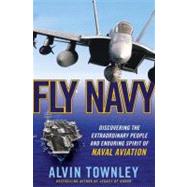
Alvin Townley is the nationally acclaimed author of Legacy of Honor and Spirit of Adventure. He lives in his hometown of Atlanta, Georgia.
For more information, please visit www.AlvinTownley.com.
| Introduction | p. 1 |
| Home Port | p. 9 |
| A Journey Begins | p. 11 |
| The Cradle of Naval Aviation | p. 25 |
| High Trust | p. 49 |
| Sharpening the Sword | p. 62 |
| Esprit de l'Aviateur | p. 76 |
| The Homefront | p. 91 |
| The Atlantic | p. 103 |
| Rescuers | p. 105 |
| Freedom Seven | p. 117 |
| The Youth of America | p. 131 |
| Haiti | p. 146 |
| The Arabian Sea | p. 159 |
| The Chain of Command | p. 161 |
| Orders to Execution | p. 182 |
| The Eastern Seas | p. 195 |
| Brothers in Arms | p. 197 |
| Returning with Honor | p. 219 |
| The Pacific | p. 239 |
| Survivors | p. 241 |
| Chiefs | p. 260 |
| Sacrifice | p. 275 |
| Generations | p. 289 |
| Epilogue: Greater Each Day | p. 306 |
| Selected Bibliography | p. 315 |
| Notes | p. 319 |
| Acknowledgments | p. 325 |
| Index | p. 327 |
| Table of Contents provided by Ingram. All Rights Reserved. |
The New copy of this book will include any supplemental materials advertised. Please check the title of the book to determine if it should include any access cards, study guides, lab manuals, CDs, etc.
The Used, Rental and eBook copies of this book are not guaranteed to include any supplemental materials. Typically, only the book itself is included. This is true even if the title states it includes any access cards, study guides, lab manuals, CDs, etc.